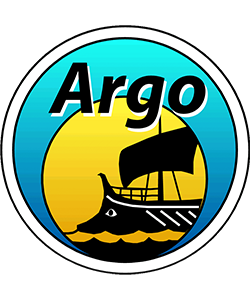Guidelines for handling data from Stage I: experimental deployment floats
The Argo Program would like to be able to include profiling floats into the Argo data stream that carry experimental sensors to facilitate the development of these new sensors and to continue to collect accepted Argo sensor data. These additional sensors may be new sensors for current parameters or they may be new sensors for new parameters.
To satisfy the Argo requirement that all measurements are transparent and available to the public and to minimize the burden on the Argo Data Management Team, Argo has formed an Auxiliary directory at the Argo GDACs that will distribute, but not curate this data. If over time the new sensors are shown to be up to Argo’s requirements as outlined in the Argo Framework, a scientist can apply for approval from the AST to move to Stage II: Global Argo Pilot.
The Argo Steering Team and Argo Data Management Team have created the following guidelines for Stage I: Experimental deployment floats:
| Step | Action | Comment |
| 1 | Agreed Argo parameters (Reference Table 3 of the Argo User’s Manual) from agreed Argo sensors (found in the Argo Reference Tables) should be handled through the DACs and GDACs in the usual way. | See the Argo float requirements page for more details. |
| 2 | Agreed Argo parameters (Reference Table 3 of the Argo User’s Manual) from non-agreed Argo sensors (found in the Argo Reference Tables) should be handled in the same way as auxiliary parameters. | PIs should use Reference Table 3 for these parameters and follow steps below. The Reference Tables will distinguish between pilot and approved sensors and parameters. |
| 3 |
|
PIs are encouraged to use recognized IODE names for new parameters wherever possible, if this can be done without ambiguity. Novel measurements may not have a suitable IODE name.
The SPECIAL_FEATURES(1024) variable in the DAC meta.nc file must be filled by the DAC, to indicate there are AUX data files. Note: there is no SPECIAL_FEATURES variable in single-cycle profile files, so there is no scope for a 1-1 pointer between single cycle profile files and auxiliary data files. |
| 4 | PIs will work with a DAC to get the auxiliary files uploaded to the GDACs | Data served by GDACs in a ‘parallel’ aux directoryGDACs will provide inventory of files
Syntax of parameter names is chosen by PIs and could be updated at any time by PI. |
Auxiliary file naming convention
File names should use the following convention at GDAC:
[WMO]_[cycle]_[PIfield]_aux.[nc|csv|txt]
[WMO]_[PIfield]_aux.[nc|csv|txt]
Bold italic part is mandatory and must match core file convention for WMO [and cycle].
Auxiliary directory files and paths
Example of files that would be available on GDACs for an Argo float with an acoustic and EM shear sensor.
Core Argo files would appear on GDACs with the following pathways:
Float files:
/pub/dac/coriolis/4902602/4902602_meta.nc – including SPECIAL_FEATURES variable filled by DAC indicating there are auxiliary data files
/pub/dac/coriolis/4902602/4902602_tech.nc
/pub/dac/coriolis/4902602/4902602_prof.nc
/pub/dac/coriolis/4902602/4902602_Rtraj.nc
Core Argo profile for cycle one:
/pub/dac/coriolis/4902602/profiles/R4902602_001.nc
Additional files for the auxiliary sensors would appear in the ‘aux’ folder on GDACs with the following pathways:
Float files:
/argo/aux/coriolis/4902602/4902602_tech_aux.nc
Profile files:
/argo/aux/coriolis/4902602/profiles/4902602_001_aux.csv
/argo/aux/coriolis/4902602/profiles/4902602_002_aux.csv
SPECIAL_FEATURES string
The SPECIAL_FEATURES string must include the substring ‘AUX’ for machine parsing. Examples:
‘THIS FLOAT HAS AUXILIARY SENSORS FOR RADIOMETRIC MEASUREMENT OF PAR’
‘THIS FLOAT HAS AUXILIARY SENSORS FOR SIZE SPECTRUM MEASUREMENT’
‘THIS FLOAT HAS AUXILIARY SENSORS FOR HYPERSPECTRAL RADIOMETRIC MEASUREMENT’
‘THIS FLOAT HAS AUXILIARY SENSORS FOR NITRATE MEASUREMENT’
‘THIS FLOAT HAS AUXILIARY SENSORS FOR EXPERIMENTAL TEMP AND CNDC’
‘THIS FLOAT HAS AUXILIARY SENSORS FOR TURBULENCE MEASUREMENTS’
The Argo Information Centre (AIC) presently tracks the sensors that provide measurements in the PARAMETER list in the meta.nc file.
The AIC can also make the SPECIAL_FEATURES string available.
The SPECIAL_FEATURES string should be suitable to be included as part of notification of floats about to drift into EEZs. It must be clear and completely describe all auxiliary measurements.
